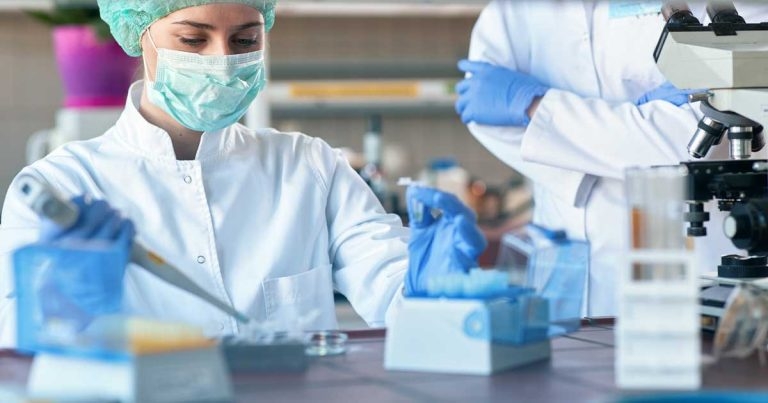14 Nov 2022
As APHA admits only half of the £2.8 billion needed for long-term future of site “as a centre for scientific excellence” has so far been secured, Johannes Charlier says benefits far outweigh estimated costs.

Image: © luckybusiness / Adobe Stock
A scientist has described the approximated costs of upgrading the UK’s main line of defence against disease threats as “peanuts”, compared to its potential benefits.
The comment by Johannes Charlier comes amid renewed focus on the state of the APHA’s Weybridge headquarters, amid the deepening crisis over avian flu.
Defra officials said work has already begun to secure the long-term future of the site “as a centre for scientific excellence”.
But the department admitted only half of the £2.8 billion that a National Audit Office (NAO) report estimated was needed for the scheme earlier this year has been secured to date.
And Dr Charlier, the lead author of a new study in The Lancet Planetary Health journal that calls for renewed international efforts to develop control tools for several infectious diseases, said some outbreaks were now becoming more difficult to manage.
He stressed that while he did not know the specifics of the APHA situation, he fully supported investment in increased capacity for dealing with animal diseases and authorities could assess what costs would be prevented by it.
He also argued that while there was a period when rapid outbreaks of diseases such as foot-and-mouth were more controllable, examples such as avian influenza and African swine fever indicated incidents were proving more difficult to contain.
He added: “My initial judgement is that £2.8 billion is peanuts compared with what the benefits could be.
“So we should invest in ‘calm periods’ for maintained capacity when outbreaks occur, but actually we are already beyond that.”
Dr Charlier’s concern has been echoed by MP and vet Neil Hudson, who renewed his plea for Government commitments to properly fund the APHA in response to the deepening crisis over avian flu.
Dozens of new cases have been recorded since the start of October alone and, as of 7 November, there has been a legal requirement to keep all poultry and captive birds indoors after the assessed risk from the disease was raised to very high.
The spread of the disease has focused renewed attention on the state of the Weybridge facilities, and its readiness to combat both present and future disease threats.
During a Public Accounts Committee hearing in the summer, senior Defra officials admitted the UK’s ability to deal with disease outbreaks would be compromised without action.
Speaking in response to a ministerial statement on the avian flu crisis, Dr Hudson, who represents Penrith and the Border, said: “Animal health and welfare, and our biosecurity are vital. It is crucial that the APHA is resourced adequately and future-proofed.”
“This avian influenza outbreak has brought our scientific capabilities for managing animal diseases into sharp relief.
“Here in Cumbria, farming is critical to our local economy and at the heart of our rural communities.
“We must stand up for these farmers and communities, and properly fund the APHA; otherwise, the consequences in the future could be devastating.”
But a Defra spokesperson insisted the Weybridge complex had “a vital role in maintaining the UK’s high standards of biosecurity”.
They said: “This is why we have secured £1.4 billion and work has commenced on site to safeguard its long-term future as a centre for scientific excellence, tackling high-risk diseases such as bird flu, salmonella and bTB.
“The Government is committed to the strongest possible standards of protection against animal diseases and is taking steps to invest in, and secure, the long-term future of the Weybridge facility.”
They added that the NAO review had underlined the need for investment in the site and “good progress is being made on the early stages of the programme”.
But avian flu, along with foot-and-mouth and bTB, has been identified by The Lancet paper as one of the conditions on which international efforts should be prioritised to improve controls, based on an analysis of 53 infectious diseases using data from the Discontools database and modelling system.
Other priorities highlighted included Nipah virus infection, African swine fever, contagious bovine pleuropneumonia, peste des petits ruminants, Rift Valley fever, sheep pox and goat pox.
Dr Charlier, who is also the Discontools project manager, said: “Prevention of these diseases will not only require development of new technologies, but also sustained investment in diagnostic networks and research infrastructures, supply chains, capacity building, and international, trans-sectoral coordination.”
The paper also proposed five animal health research priorities – vaccinology, antimicrobial resistance, climate mitigation and adaptation, digital health, and epidemic preparedness.
Roxane Feller – a member of the Discontools board and secretary general of Animalhealth Europe, the animal medicines industry’s trade body – said the time had now come to move “from firefighting to fire prevention”.
She added: “The impacts of animal disease stretch even further beyond public health, from devastating socio-economic effects for those who rely on livestock for income, to negative environmental effects through feed used and emissions created with no food output.
“Through public and private investments in innovative early research, the animal health industry as a whole can focus on unlocking the secrets needed to develop new generations of vaccines, diagnostics and other therapies to prevent animal disease, and avoid the negative effects.”